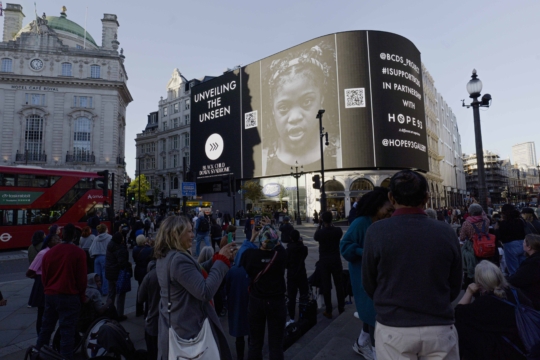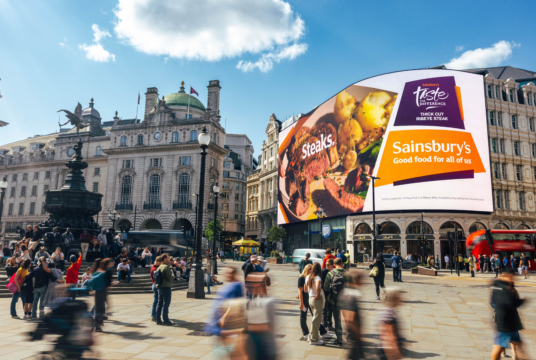
Hugely informed and shaped by external influences, the retail space has always been propelled forward at a breakneck pace. As the newspaper headlines often scream, times are tough enough for retailers, with high business rates, the rise of online, and now Covid-19, all affecting trading conditions and impacting shopper behaviours.
One approach retailers take to mitigate these seismic shifts are through robust research projects that aim to reveal what people really value when buying products and services.
Westfield have been producing ‘How We Shop ’ reports for years. In their latest 2020 instalment, ‘The Next Decade’, Westfield explored the holistic retail landscape by surveying 15,000 consumers across 10 different countries – where they now boast a portfolio of 102 shopping centres across 27 cities.
The research revealed five key emerging trends in the transformation, resurgence and refocusing of the retail experience. These insights are essential for retailers to stay competitive and innovative, and for media strategists and planners producing engaging advertising content and immersive experiences.
Watch the full webinar here, as presented by Westfield’s Head of Media & Client Operations UK/Europe Chris Lynham and Head of Brand Experience UK/Europe Grace Charge, or read our top takeaways below.
Westfield’s Five Future Trends
1. Anti-prescription – Impulse shopping
Ever heard of an echo chamber? It’s a digital or offline environment where we encounter beliefs and opinions that validate our own.
From an online retail perspective, these echo chambers are usually served up in the form of inaccurate algorithms churning out “personalised” shopping edits, where everything is tightly curated. Often fed up with the disappointing service, impulse purchasing is becoming the new normal – and is twice as likely in-store.
More than 143 million shoppers are frustrated by inaccurate product recommendations while shopping online: Westfield found that 56% of European consumers are exasperated by incorrect online retail recommendations, suggesting that retailers should stay close to their consumers through data. Nearly 60% want to browse full ranges, not automated edits.
2. Upside Down Retail
Consumers crave innovation and the experience economy has changed the retail game – shoppers now have an active expectation for experiential activity – and the trend is set to stay.
Westfield’s report found that 59% of European consumers believe that 2025 will see a tipping point where more than half of all retail space will be dedicated to an associated experience. That rises to 75% by the year 2027.
42% of all European consumers want more creative experiences in-store – including studios where you can create your own content, such as podcasts and video games. With the rise of co-working across Europe, nearly 30% of city dwellers are also seeking workspaces and educational opportunities in-store.
Experiential innovation was a given, including self-mending tech, clothes that rewarded the wearer and automatic food and drink subscriptions.
Working with our partners at Westfield, Ocean Labs provides brands with immersive experiential areas, connected to cutting-edge DOOH screens across both centres. Most recently, the team worked with Marc Jacobs International and COTY to distribute samples of the new fragrance, Perfect – helping to drive awareness with 14k consumers, all in socially distanced environments.
3. Self-Sustaining Stores
As we learn more about our impact on the environment, consumers are increasingly looking to brands to help them create a more sustainable future. Westfield’s research found that 76% of Europeans want retailers to do more to address environmental concerns.
Self-sustaining shops and restaurants were top of customer wish-lists: 71% of shoppers want brands to make products in-store while they wait or produced in-store beforehand to minimise waste, marking a potential trend for factory stores.
The study’s researchers concluded that the store of the future could extend this self-sufficient approach to include allotments on-site to grow ingredients and 4D-printing factories and studios to enable on-demand production. Customers could even pay for goods through points programmes where they’re rewarded for their positive, eco-friendly practices.
4. Retail Surgery
You may have heard of Retail Therapy, but we have a new phrase for you: Retail Surgery. Now we’re firmly rooted in the digital era, research has found that retailers will be able and expected to diagnose exactly what a shopper wants based on their data history. In essence, retailers will start to act like doctors, prescribing specific, personalised and accurate solutions to enhance shoppers’ daily lives.
According to the research, 31% of consumers revealed they would be happy to hand over their DNA in order to receive products better suited to them. Westfield found the DNA testing market alone could be worth in excess of €18 billion across Europe, presenting exciting and innovative opportunities for retailers over the next decade.
5. Locally Morphed
The face of the traditional shopping centre is set to change as they morph into their surrounding environments: Westfield’s research found that almost half of today’s shoppers have a strong desire to be more connected with their local community, with seven out of ten shoppers revealing they want future retail environments to reflect the individuals and communities they serve.
High levels of interaction and sociability – creating a destination space – was also of high importance to consumers, with the retail spaces of tomorrow evolving into community hubs with 70% of consumers wanting them to reflect the people who live in the area.
What does this mean for advertisers?
Bricks and Mortar stores are still magnets for audiences, with most rallying against inaccurate online recommendations or edits and leaning towards the freedom and experience found in physical settings
For experiential activations, personalisation using first-party data is key. Creating content and experiences that are based on how people actually live and behave will lead to those increasingly hard-to-find connections with your audience. Anything that includes (responsibility distanced) social elements will also push all the right buttons for consumers.
Finally, sustainability is an important factor for today’s environmentally conscious shoppers. Creating campaigns or experiences that promote zero-waste, drive sustainability or do something positive to impact on their local environment will be a draw.
Westfield are the experts for crowd management and boast the safest retail environments in London (if not the UK), by creating brand-safe environments and safe spaces for shoppers. Post-Covid, this has led to returning audiences (both London-based Westfield centres regularly attract 1m+ weekly footfalls), returning spends and UK league leading retailers.
To find out how you can explore the research’s themes and capitalise on these key trends in your advertising, please contact Steve Barton or check out some of our latest Westfield campaigns for inspiration.











